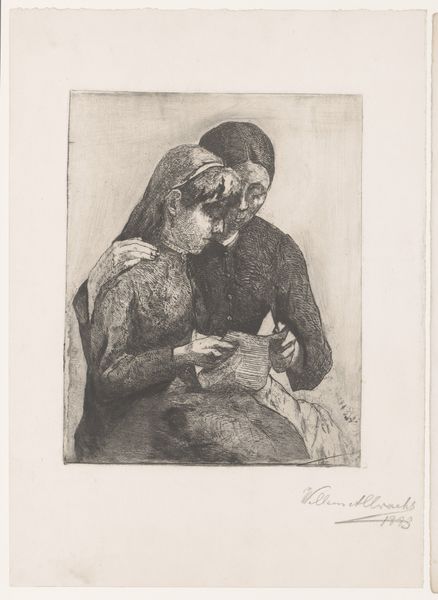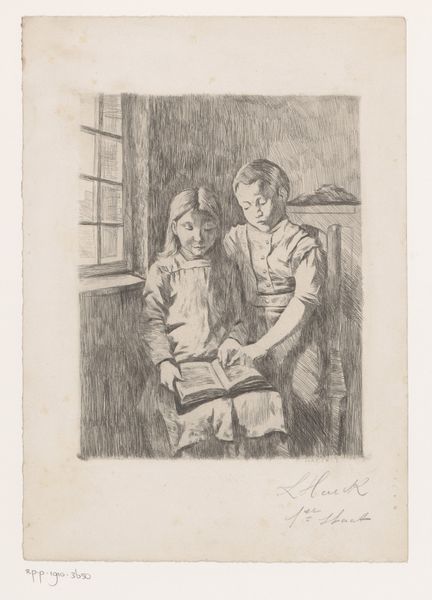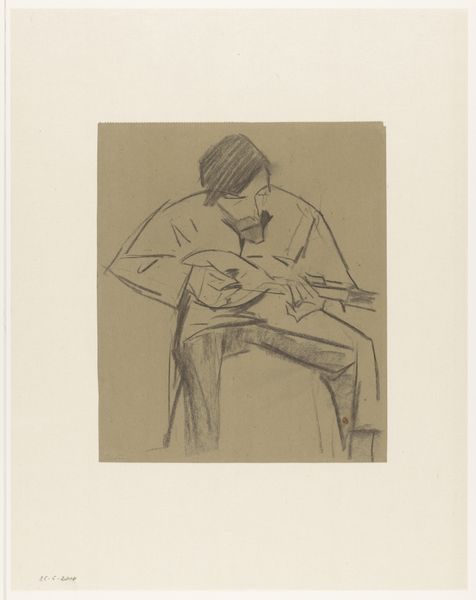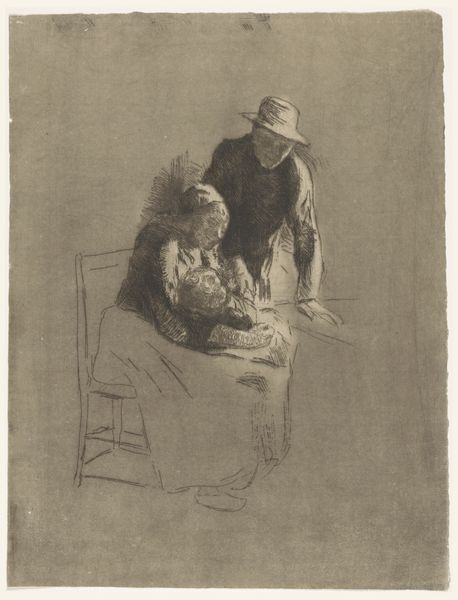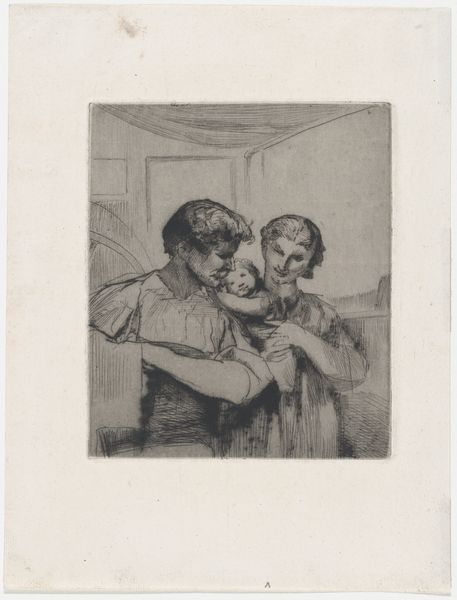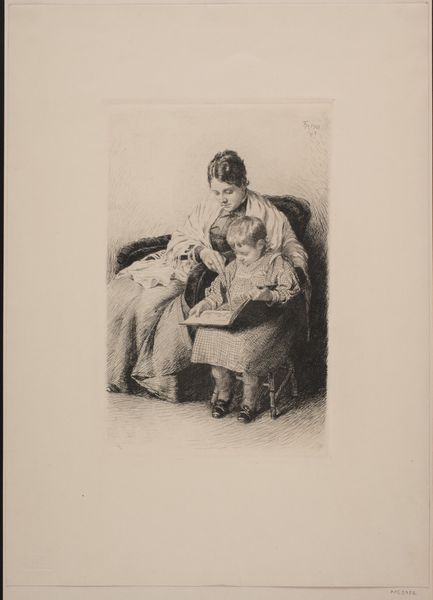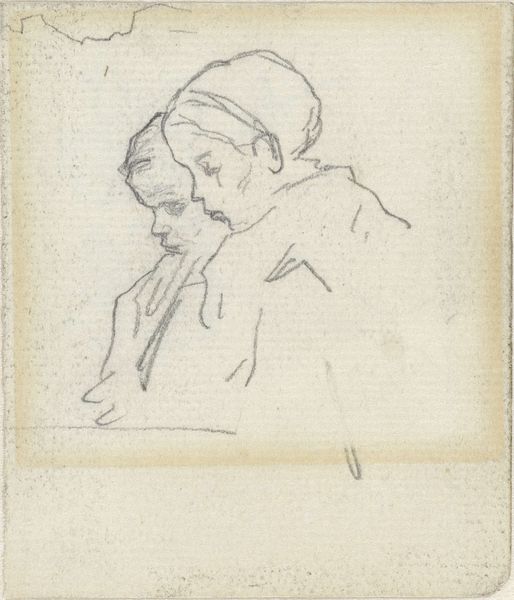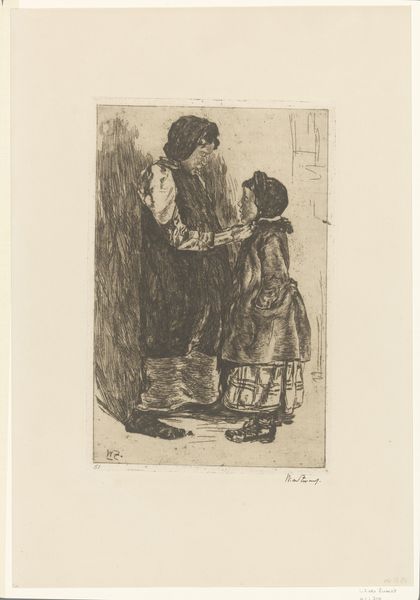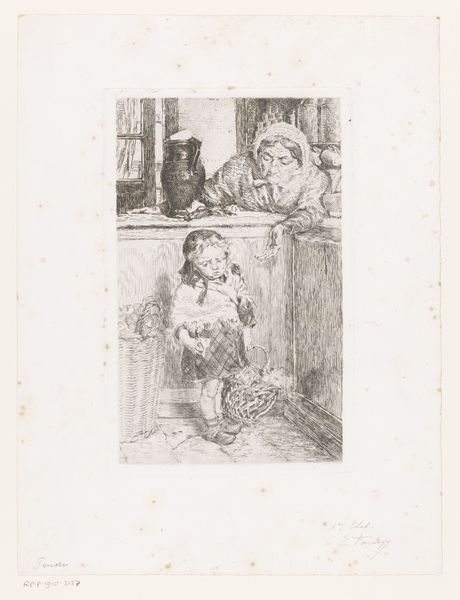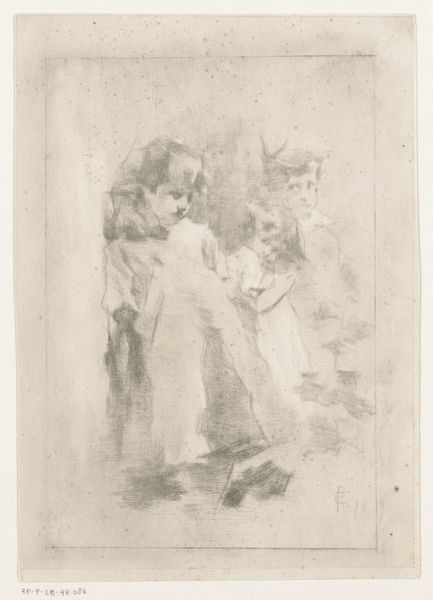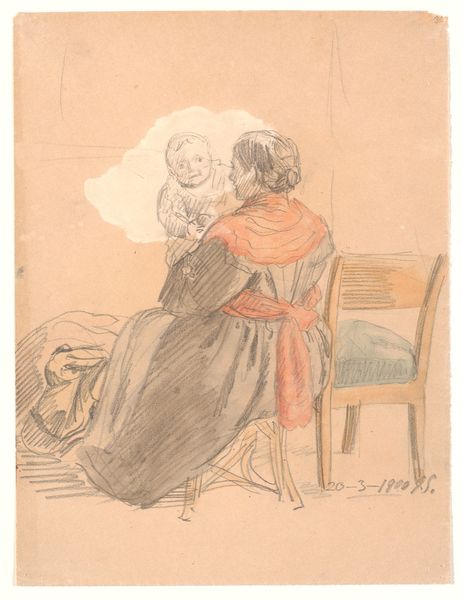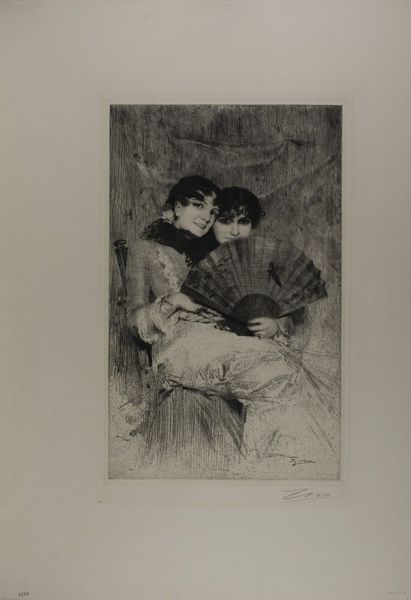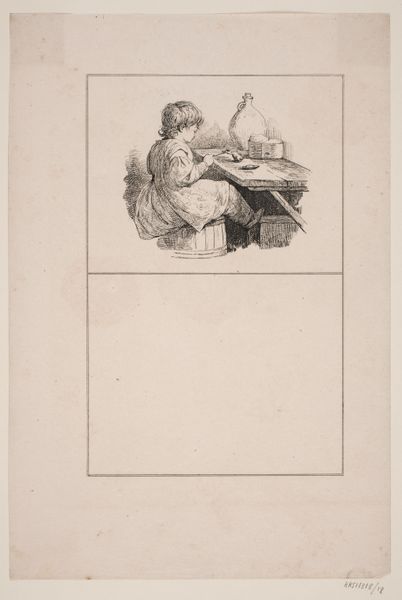
print, etching
#
portrait
# print
#
etching
#
19th century
#
genre-painting
#
realism
Dimensions: height 246 mm, width 198 mm
Copyright: Rijks Museum: Open Domain
Curator: I find a delicate sense of shared intimacy emanating from Willem Albracht’s 1883 etching, "Two Seated Women Reading a Letter Together". It’s a study in concentrated absorption, isn’t it? Editor: The weight of the scene really strikes me. It’s rendered in a humble, almost austere style. I'm thinking of the labor involved in etching: the meticulous work with acid on metal plate, producing this detailed scene of domestic life. The finished piece embodies both a skilled craft and quiet hardship. Curator: Note how Albracht deploys shadow and light. See the distinct contrast between the figures, and the subtle modelling that sculpts form, imparting emotional weight through purely visual means. There's also the visual symbolism, right? The letter itself acting as the pivotal point. Editor: Absolutely. The choice of materials – the etching medium itself – amplifies this feeling. It allows for incredible detail but requires significant labour, resonating with the implied labour and lives of the subjects themselves. This reinforces its place within a 19th-century realist style, documenting daily realities without gloss. The materiality emphasizes process and purpose. Curator: And in their faces, we are witnesses to some inner unfolding revealed through Albracht's artful composition of gesture and gaze, focusing our own perspective on how the text shapes their shared moment. I can't help but feel drawn into the mystery of their experience. Editor: It’s true. I agree, too, about the symbolism within the etching technique. There's a definite social context at play here as well: letter writing as a key form of communication. These letters and etchings speak across generations in how communication practices can foster intimacy in certain societies. Curator: Exactly. By closely analyzing Albracht’s choices, the relationship among style, composition, and process elevates everyday interaction and unveils layers of meaning—and that, for me, is art’s primary function. Editor: Yes, indeed. It reminds me again of the many skilled, nameless hands contributing to our cultural heritage, each object holding stories that tell us a lot about art.
Comments
No comments
Be the first to comment and join the conversation on the ultimate creative platform.
